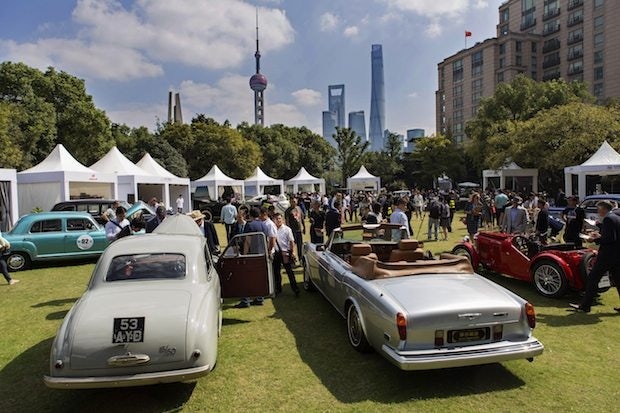
As China’s wealthy seek out both new status symbols and investment opportunities in the face of a shaky stock market, classic cars are increasingly starting to catch their attention despite regulatory hurdles.
At the October 16 to 18 Bund Classic car show, vintage autos by brands such as Rolls Royce and Mercedes-Benz adorned the lawn of the old British consulate on Shanghai’s Bund as collectors and brands gathered to promote classic car collection to both investment- and lifestyle-minded Chinese elites.
Activities for visitors over the course of the weekend went far beyond the auto exhibition itself and ranged from the pragmatic to the indulgent, including a forum on heritage investment, a classic concert, classes on table settings and wine-tasting, and a “hat-mandatory” picnic on the lawn, sponsored by a wide range of luxury brands including Vacheron Constantin, Ferrari, and Christofle. The event's focal point was the Concours d’Elegance, a parade of the automobiles on the Bund followed by a selection of the most elegant model by a panel of high-profile judges.
In its third year, the Bund Classic is one sign of a growing interest in collecting vintage automobiles in China as the market booms globally. “The classic car trend is taking up fast in China and several Chinese collectors are starting even to invest in cars overseas,” says Delphine Lignières, the founder of Bund Classic organizer China Rendez-Vous. Classic car collecting is “definitely a trend” in China, agrees Liu Tao, the vice manager of the Shanghai Auto Museum, which displayed four classic cars at the event. “Before, people were most interested in collecting art. Now, the use of cars is increasing in the country and the new generation has more opportunities to come into contact with cars. Their enthusiasm for cars is growing.” Just a few weeks after the Bund Classic, the Classic Car Challenge China held its fifth annual event, in which drivers took 51 classic cars on a 1,200-km journey from Beijing to Shanghai.
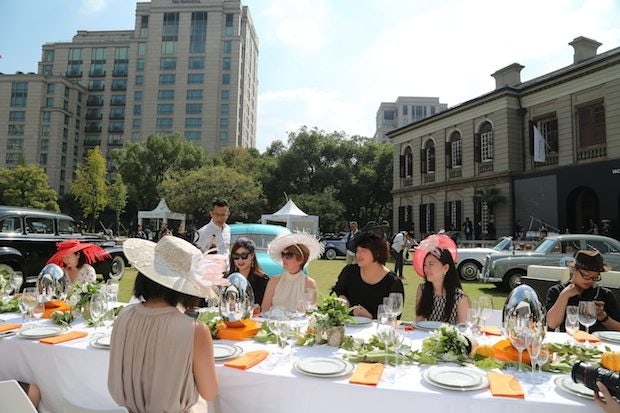
As China’s recent stock market crash and worries about a real estate bubble have caused wealthy Chinese individuals to seek out alternative forms of investment, many are looking to collectibles and classic cars as the market booms globally. “I do believe that the stock market crash has pushed a few high-profile [individuals] to find alternative investments, and that classic cars and art have been a great option,”says Lignières. “More and more Chinese start to take part in overseas classic car auctions and we can see the trend growing fast.”
Investors are likely encouraged by signs of growing global demand. At the 2014 edition of the Pebble Beach Concours d'Elegance in California, which has seen a growing number of Chinese participants in recent years, total sales broke a record of $399 million. Lignières also notes that Warren Buffet has said investing in classic car is better than in gold, and a recent Knight Frank study on investment in collectibles found that the largest growth is connected to cars.
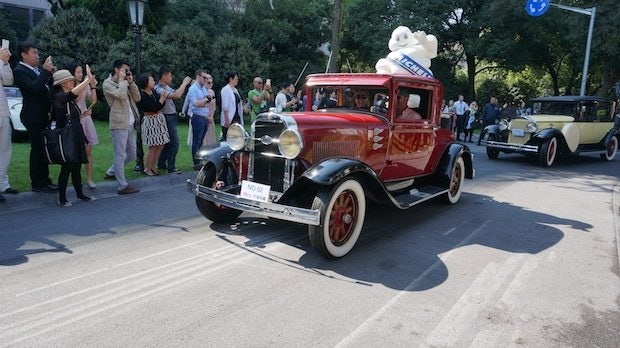
But collectors face significant regulatory obstacles in China, where the import of used cars is banned. Events like the Bund Classic play an important role in exposing potential collectors to the cars, as classic car shows, rally racing, and donations are the only ways one can legally transport a vintage car into China.
As a result, many wealthy collectors buy cars and store them abroad, according to Alexi Fung, the Hong Kong managing director of Bonhams auction house, which held the sale of the world’s most expensive vintage car ever sold at auction with the $38 million purchase of a Ferrari 250 GTO Berlinetta in 2014. In addition to promoting the sale of its classic cars to potential customers at the event, Bonhams featured a display of jewelry, watches, and art prints for Chinese collectors to view. “For Chinese clients, the majority of them are collecting Chinese paintings and Chinese works of art,” he says, but in the vintage luxury market, “we can see the growth as well.”
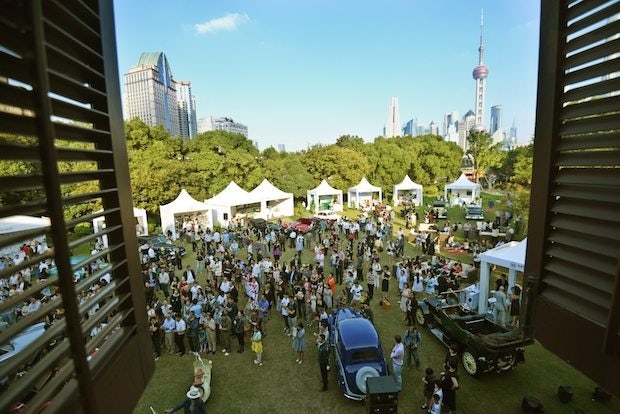
According to Fung, the purchase of a classic car or luxury item at auction should be a long-term investment rather than a knee-jerk response to the stock market. “The stock market goes up and down instantly,” he says. “For investment objects or jewelry or cars—these are the kind of objects that you cannot sell right away. You have to go through an auction house. Auction houses have two seasons a year, so you have to wait at least four or six months to put it on the market and sell it.”
As a result, China’s burgeoning collectors are often motivated not only by financial incentives, but also by a passion for collecting. Liu says that although the classic car market is similar to the art and antiques market in terms of investment buying, there are also many collectors who are buying out of personal interest. “We encounter many collectors who love cars and collect without caring much about how much the value will increase or with a goal of eventually selling in mind. They just like the cars."
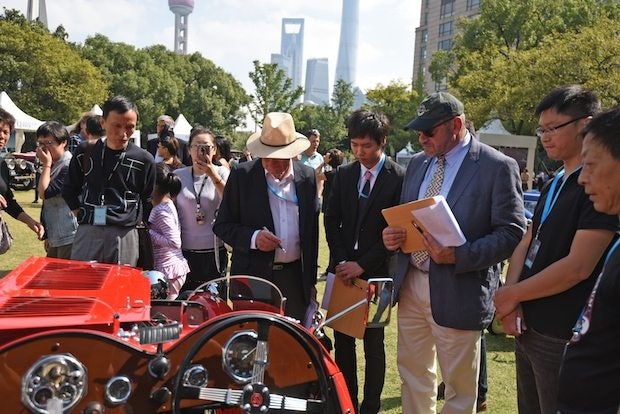
In addition to the classic cars, the event also featured displays by luxury automakers and art car sellers. Ultra-luxury Italian sports car manufacturer Pagani, which only produces 40 models a year, just opened its third global showroom in Shanghai despite China’s luxury auto market slowdown. Its global sales director Alberto Giovanelli is not concerned about the slowdown, saying that the main aim of the brand “has always been to target a niche market for a pure luxury experience.” While other luxury auto brands like Ferrari, Porsche, Maserati, and Bugatti are “targeting very high volumes” ranging from 1,000 to 50,000 units globally per year, he says, demand is still high at the top echelon of the ultra-rich in China. “What we’re looking at is a private collector, mostly, that already has most of these cars. He’s probably an international traveler; he’s got most of the brands; he drives most of the cars. He’s not going to be affected by this slowdown in China. Our target is really extremely high. There’s nothing on top of a Pagani client in terms of purchasing power and automobile collection.”
Whether for investment, personal interest, or both, the goal of events like Bund Classic is to spark wider interest in classic car collection among China’s wealthy by educating them about the market while demonstrating the perks of the lifestyle in the classic car collecting community. “I think they need to learn and they need to be educated for collecting vintage cars,” says Fung about China's wealthy potential buyers. “Once they get into collecting cars, they will learn a lot more; they cannot stop themselves from buying.”